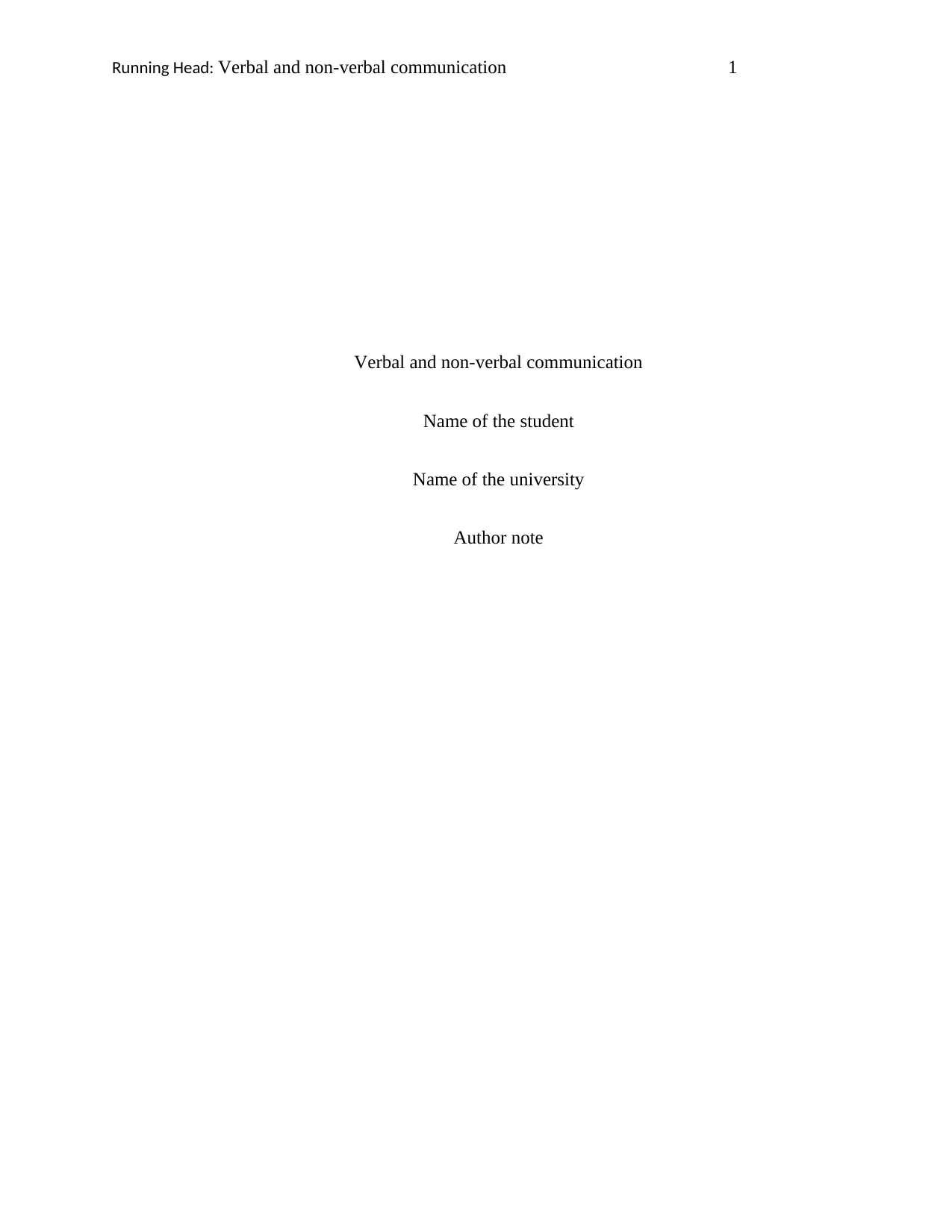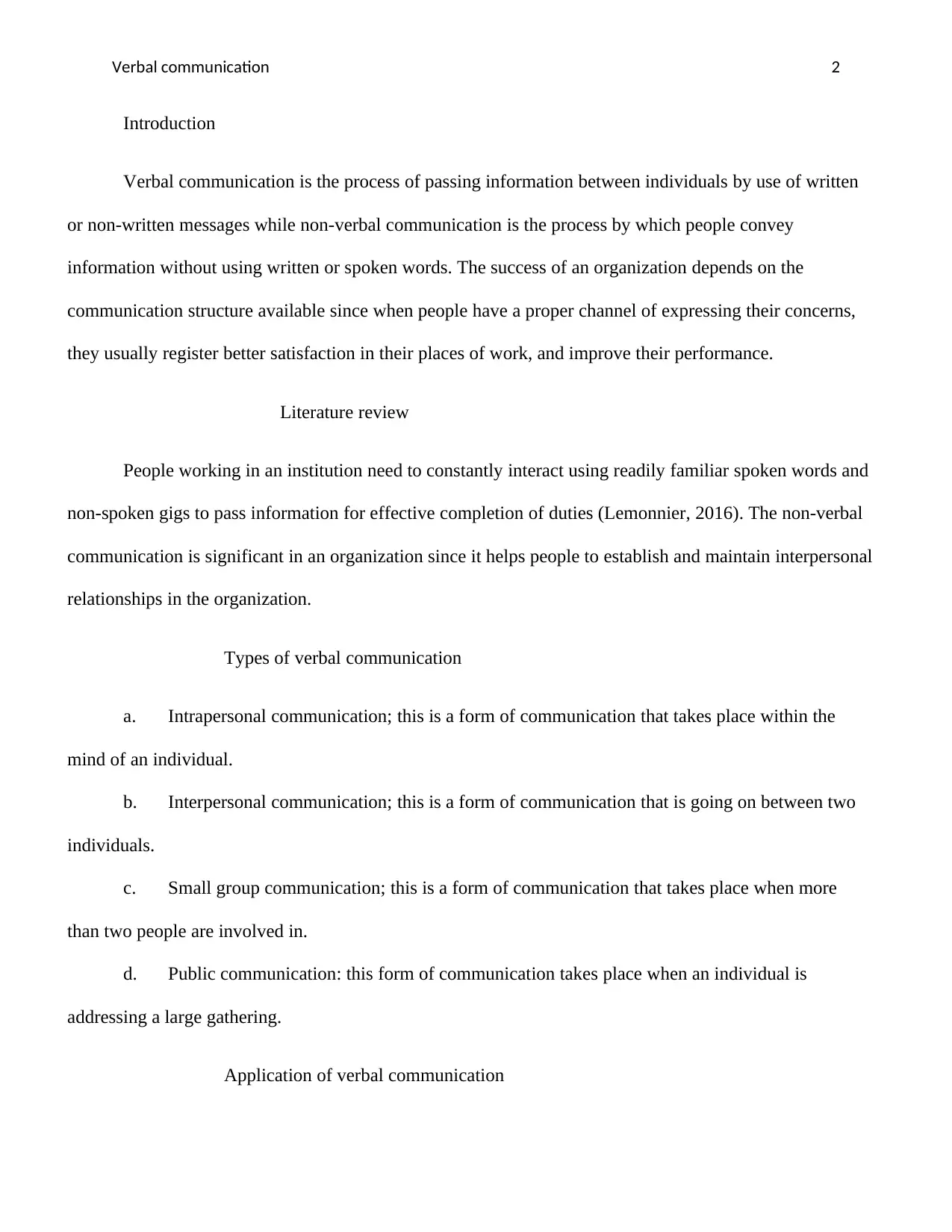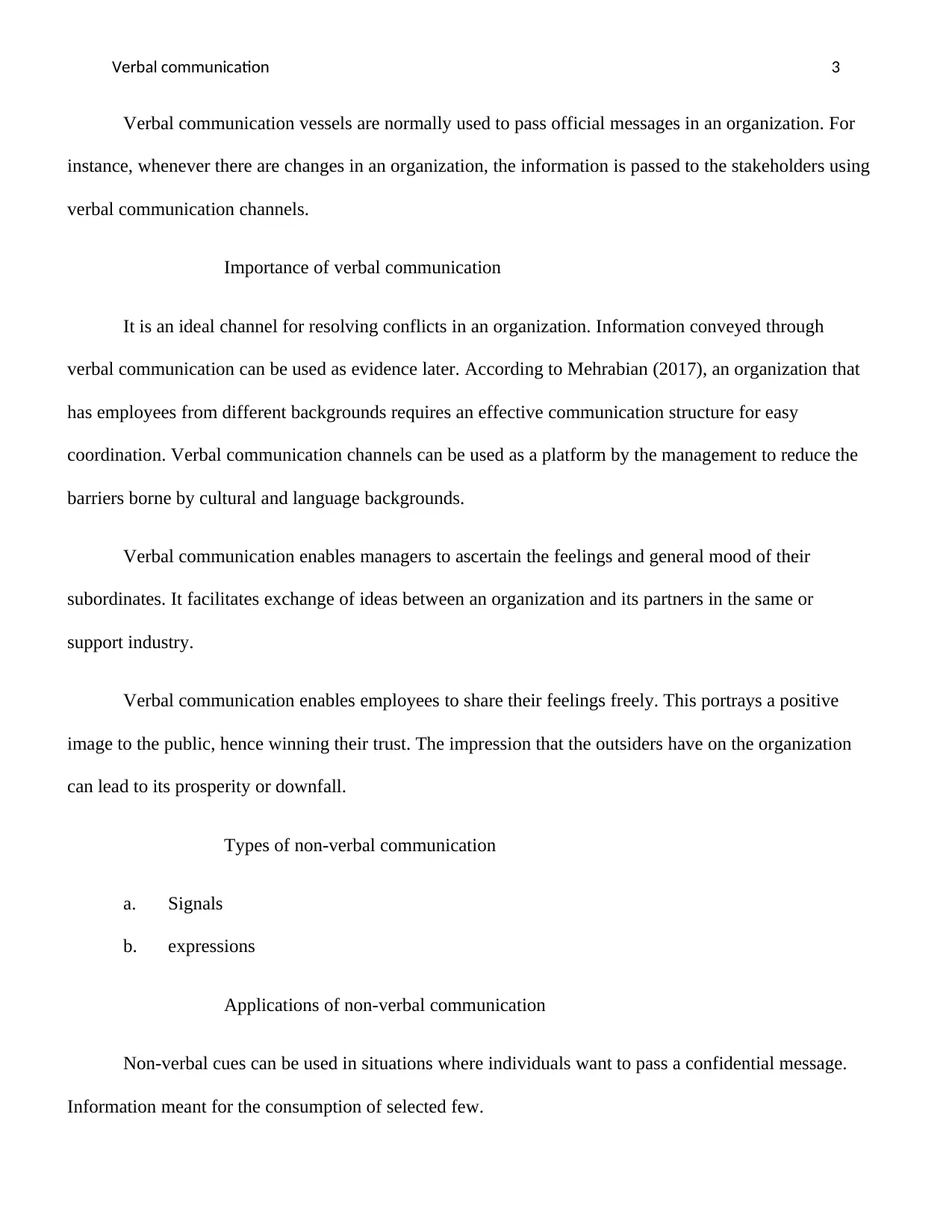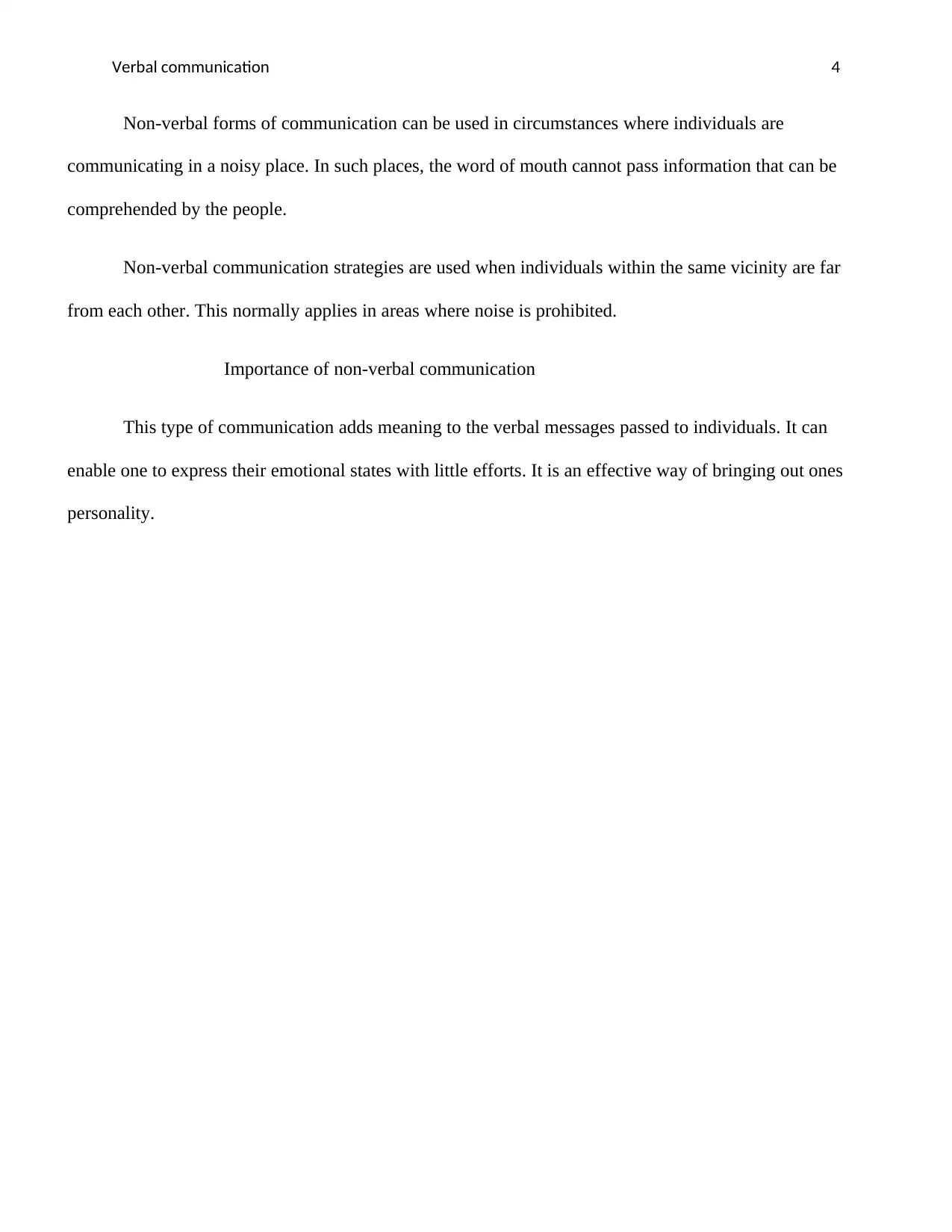Report on Verbal and Non-Verbal Communication Strategies and Impact
VerifiedAdded on 2022/11/17
|5
|598
|479
Report
AI Summary
This report delves into the realm of verbal and non-verbal communication within organizational settings. It begins by defining both forms of communication, highlighting their roles in conveying information and fostering interpersonal relationships. The report then explores the types of verbal communication, including intrapersonal, interpersonal, small group, and public communication, and discusses their applications. It emphasizes the importance of verbal communication in resolving conflicts, conveying messages, and building relationships within an organization. Furthermore, the report examines the types and applications of non-verbal communication, emphasizing its role in conveying emotional states and personality traits. The significance of non-verbal cues is highlighted, particularly in situations where verbal communication is limited or ineffective. The report concludes by underscoring the combined importance of both verbal and non-verbal communication in ensuring effective communication and achieving organizational goals. The report also includes a SWOT analysis template.
1 out of 5










![[object Object]](/_next/static/media/star-bottom.7253800d.svg)